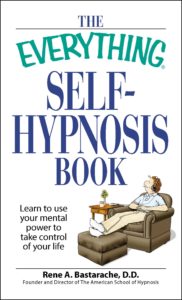Maximize hypnotic induction efficiency with three potent techniques: Instant Eye Fixation Method locks focus for deep trance; Rapid Progressive Relaxation Technique eases tension through breath and muscle control; Sudden Shock Induction Approach quickly induces trance states via surprise. Safe application ensures effective results.
Instant Eye Fixation Method

Utilizing the instant eye fixation method is a powerful technique often employed in rapid hypnotic inductions to quickly establish focus and deepen the hypnotic trance state. By instructing the subject to fixate their gaze on a particular point or object, such as a swinging pocket watch or a flickering candle flame, the hypnotist can induce a state of deep trance rapidly.
This method capitalizes on the natural tendency of the eyes to follow movement, leading to a heightened state of concentration and receptivity to suggestion.
During rapid induction, the instant eye fixation method serves as a catalyst for bypassing the critical conscious mind and accessing the subconscious directly. The intense focus on the visual stimulus can swiftly draw the subject into a hypnotic state, allowing for a more expedited induction process.
This technique is particularly effective for individuals who are responsive to visual cues and can help streamline the hypnotic experience by facilitating a quick transition into a deep trance state.
Rapid Progressive Relaxation Technique
The Rapid Progressive Relaxation Technique is a method commonly utilized in rapid hypnotic inductions to swiftly induce a state of deep relaxation. This technique involves guiding the individual through a series of steps that focus on deep breathing and releasing muscle tension progressively.
By incorporating deep breathing exercises, the individual is encouraged to inhale deeply, hold the breath briefly, and then exhale slowly. This rhythmic breathing pattern helps to calm the mind and relax the body, setting the stage for the induction process.
Simultaneously, the individual is instructed to tense and release specific muscle groups in a systematic manner. This process of tensing and then releasing muscle tension helps the individual become more aware of their bodily sensations and promotes a deeper sense of relaxation.
As the individual continues to engage in deep breathing and muscle relaxation, they are guided towards a state of profound calmness and receptivity, making them more susceptible to hypnotic suggestions. The Rapid Progressive Relaxation Technique is a powerful tool for quickly inducing a hypnotic state and can be effective in various therapeutic settings.
Sudden Shock Induction Approach

What unique method can be employed to swiftly induce a hypnotic state in individuals seeking rapid inductions?
The sudden shock induction approach, also known as surprise induction, is a technique that can rapidly induce a hypnotic state in a subject. This method involves surprising the individual with a sudden and unexpected action or statement, leading to a state of shock or confusion that can facilitate a quick transition into hypnosis.
The surprise induction technique works by disrupting the subject's usual patterns of thinking and behavior, allowing the hypnotist to capitalize on the moment of disorientation to guide the individual into a hypnotic state.
By using elements of shock therapy, such as sudden loud noises, unexpected movements, or startling commands, the hypnotist can bypass the conscious mind's usual defenses and establish a direct line of communication with the subconscious.
While the sudden shock induction approach can be highly effective in rapidly inducing hypnosis, it is essential to use this technique responsibly and ethically, ensuring the subject's safety and well-being throughout the process.
Frequently Asked Questions
Can Hypnotic Induction Be Used for Self-Hypnosis?
Hypnotic induction can indeed be utilized for self-hypnosis. This practice is beneficial for self-improvement, aiding in relaxation and promoting focused meditation. Through techniques like visualization, individuals can guide themselves into a hypnotic state for personal growth.
Are There Any Age Limitations for Rapid Hypnotic Induction?
When considering rapid hypnotic induction, age limitations are crucial. Ethical considerations require special caution with minors due to their cognitive development. Effectiveness varies by individual, while potential risks emphasize the need for trained professionals in such interventions.
Can Rapid Induction Be Effective for Deep-Rooted Issues?
Rapid induction can be effective for deep-rooted issues by quickly accessing the subconscious mind. However, it may have limitations in addressing long-term effects or complex traumas. Careful consideration of individual needs and potential therapeutic follow-up is essential.
Is It Safe to Undergo Rapid Hypnotic Induction Frequently?
Frequent use of rapid hypnotic induction, particularly in self-hypnosis, raises safety concerns. Overuse can lead to psychological dependence or exacerbate existing issues. It is advisable to practice moderation and seek guidance from a qualified professional.
How Long Does the Hypnotic Trance Induced by These Techniques Last?
The duration of a hypnotic trance induced by rapid techniques varies. Factors like client susceptibility and the depth of induction play a role. To maintain the trance state, reinforce suggestions, use calming language, and avoid sudden disruptions to ensure a stable impact.
Conclusion
In conclusion, the three best techniques for rapid hypnotic induction are the Instant Eye Fixation Method, Rapid Progressive Relaxation Technique, and Sudden Shock Induction Approach.
Each of these methods has been proven effective in quickly inducing a hypnotic state in subjects.
By utilizing these techniques, hypnotists can achieve rapid results in guiding individuals into a state of heightened suggestibility and focus.


